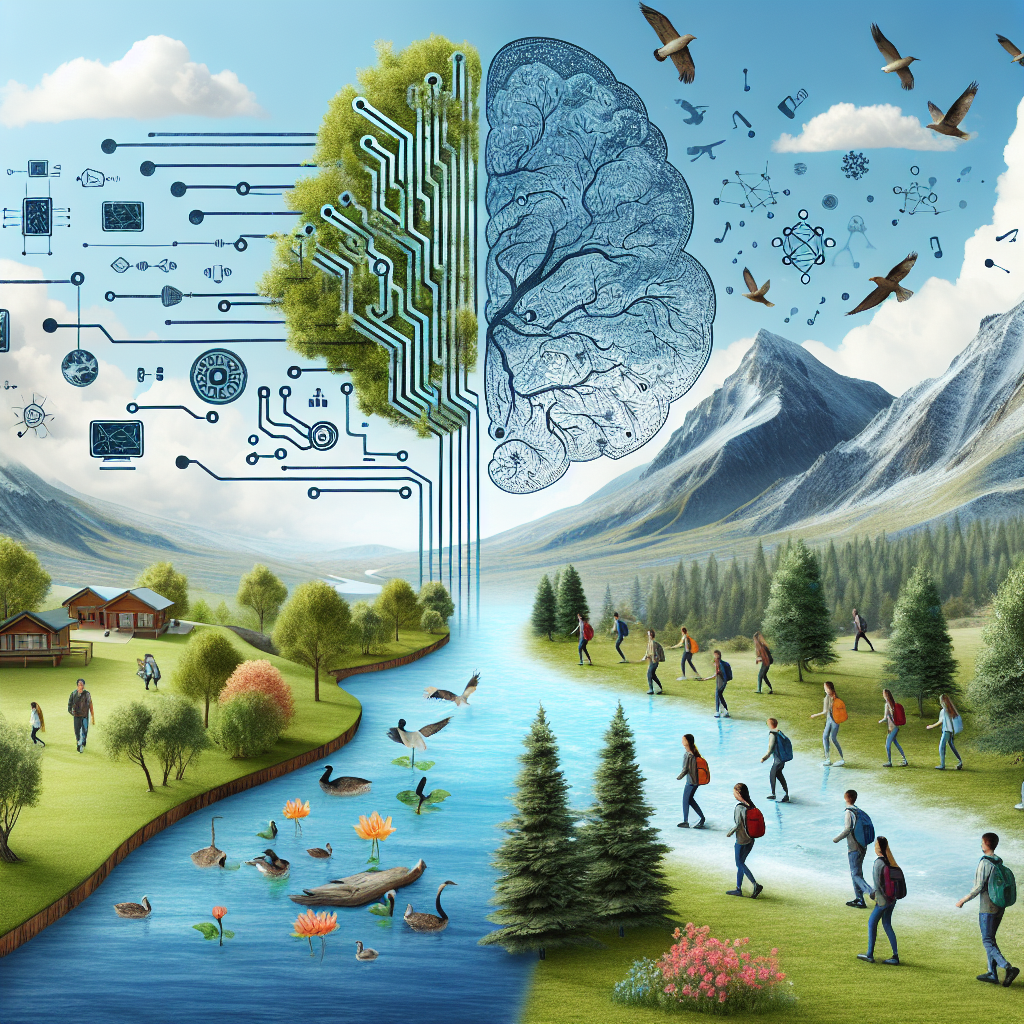In recent years, the integration of artificial intelligence (AI) into education has been a hot topic of discussion. One area where AI has the potential to make a significant impact is in outdoor education. By leveraging AI technology, educators can enhance the way students connect with the natural environment and learn about the world around them. In this article, we will explore how AI can be used to improve outdoor education and connect students with the environment.
AI in Outdoor Education
Outdoor education is an important component of the curriculum for many schools around the world. It provides students with the opportunity to learn about the natural world, develop new skills, and foster a sense of appreciation for the environment. However, traditional outdoor education programs can be limited in their scope and effectiveness. This is where AI comes in.
One way that AI can enhance outdoor education is through the use of virtual reality (VR) and augmented reality (AR) technology. By using VR and AR tools, educators can create immersive experiences that allow students to explore different environments and ecosystems without leaving the classroom. For example, students could use VR headsets to take a virtual hike through a rainforest or AR apps to identify plants and animals in their local park.
AI can also be used to personalize the outdoor education experience for each student. By analyzing data on students’ interests, learning styles, and abilities, AI algorithms can tailor outdoor activities to meet individual needs. For example, a student who is interested in bird watching could be assigned a project to create a digital field guide to local bird species, while a student who struggles with navigation skills could receive extra support and guidance during a hiking trip.
Furthermore, AI can help educators track and assess students’ progress in outdoor education programs. By collecting data on students’ performance, engagement, and outcomes, AI algorithms can provide valuable insights that can inform future lesson planning and program development. This data-driven approach can help educators identify areas where students are excelling and areas where they may need additional support.
Connecting Students with the Environment
One of the key goals of outdoor education is to help students develop a deeper connection with the natural environment. AI can play a crucial role in fostering this connection by providing students with opportunities to engage with the environment in new and innovative ways.
For example, AI-powered sensors and drones can be used to collect data on environmental conditions, such as air quality, temperature, and biodiversity. Students can then analyze this data and use it to better understand how human activities impact the natural world. By engaging in hands-on, data-driven projects, students can develop a sense of ownership and responsibility for the environment.
AI can also be used to facilitate real-time interactions with the natural world. For instance, students could use AI chatbots to ask questions about local flora and fauna, or participate in citizen science projects that involve collecting and analyzing environmental data. By engaging with the environment in a meaningful way, students can develop a sense of curiosity and wonder that can inspire a lifelong love of nature.
FAQs
Q: How can AI be used to enhance outdoor education?
A: AI can be used in outdoor education to create immersive virtual and augmented reality experiences, personalize learning for individual students, track and assess student progress, and facilitate real-time interactions with the natural environment.
Q: What are some examples of AI tools that can be used in outdoor education?
A: Some examples of AI tools that can be used in outdoor education include virtual reality headsets, augmented reality apps, AI chatbots, sensors, drones, and data analysis software.
Q: How can AI help students develop a deeper connection with the environment?
A: AI can help students develop a deeper connection with the environment by providing opportunities to engage with the natural world in new and innovative ways, such as analyzing environmental data, participating in citizen science projects, and interacting with AI-powered tools and technologies.
Q: What are the benefits of using AI in outdoor education?
A: The benefits of using AI in outdoor education include enhancing the learning experience, personalizing instruction for individual students, tracking and assessing student progress, fostering a deeper connection with the environment, and inspiring a lifelong love of nature.
In conclusion, AI has the potential to revolutionize outdoor education by providing students with new opportunities to connect with the natural world and learn about the environment in a meaningful way. By leveraging AI technology, educators can create immersive experiences, personalize learning, track student progress, and foster a deeper connection with the environment. As AI continues to evolve, the possibilities for enhancing outdoor education are endless, and the benefits for students are immeasurable.

